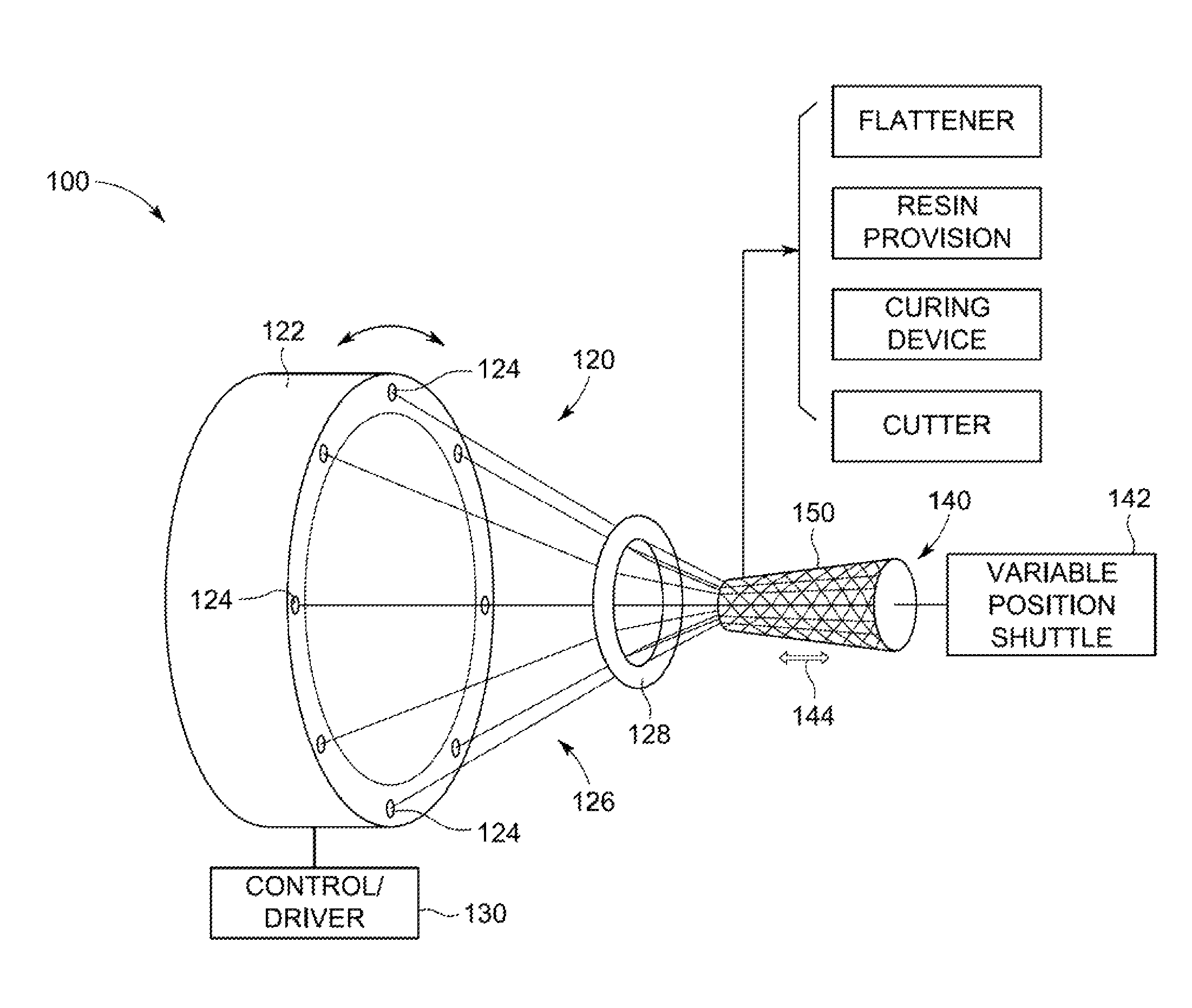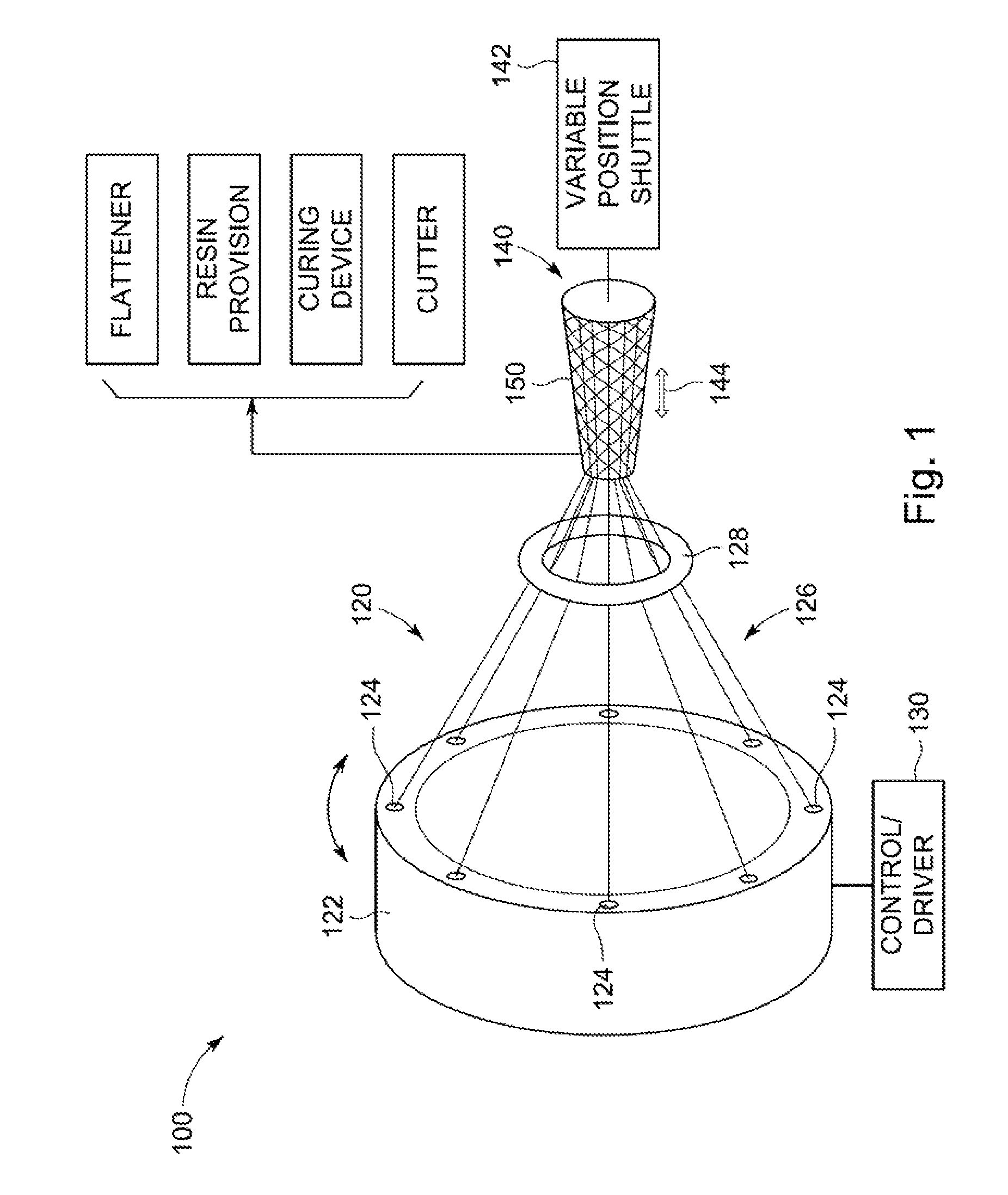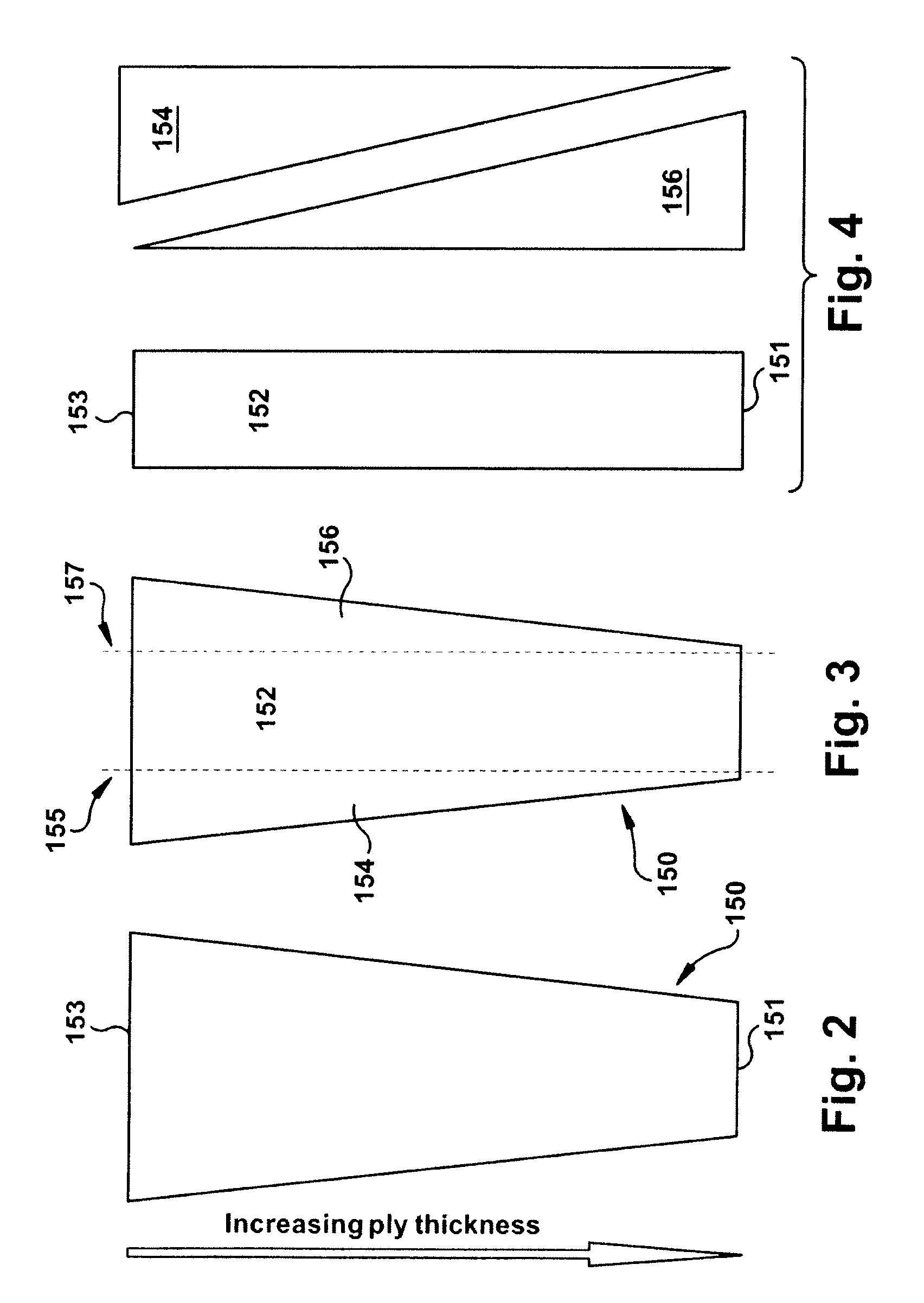Composite spars
a technology of composite materials and spars, applied in the field of composite materials, can solve the problems of slow manufacturing process, high cost of cloth/fabric materials, and better performance of composite materials based spars for many applications, and achieve the effect of speeding up production
- Summary
- Abstract
- Description
- Claims
- Application Information
AI Technical Summary
Benefits of technology
Problems solved by technology
Method used
Image
Examples
Embodiment Construction
[0022]FIG. 1 shows an apparatus 100 for manufacturing a non-uniform thickness composite spar component 152 in accordance with an embodiment of the present invention. The apparatus comprises a braiding machine 120, a variable position shuttle 142 and a non-cylindrical mandrel 140.
[0023]The non-cylindrical mandrel 140 may be formed of foam, aluminum, plastics, etc., and may be some 1.3 m in length for forming a propeller blade. In various embodiments, a plurality of mandrels (e.g. up to three) of increasing diameter may be used to produce a spar. The variation in thickness of the spar component 152 may be, for example, from about 10 mm to about 15 or 20 mm, and the finished spar component 152 may have dimensions of approximately 1300 mm×250 mm×9 mm, for example.
[0024]In one embodiment, the braiding machine 120 is a Herzog™ RF1 / 192-100 braiding machine available from Herzog Maschinenfabrik GmbH & Co. KG, Am Alexanderhaus 160, D-26127, Oldenburg, Germany [9].
[0025]The braiding machine 1...
PUM
| Property | Measurement | Unit |
|---|---|---|
| length | aaaaa | aaaaa |
| thickness | aaaaa | aaaaa |
| thickness | aaaaa | aaaaa |
Abstract
Description
Claims
Application Information
 Login to View More
Login to View More - R&D
- Intellectual Property
- Life Sciences
- Materials
- Tech Scout
- Unparalleled Data Quality
- Higher Quality Content
- 60% Fewer Hallucinations
Browse by: Latest US Patents, China's latest patents, Technical Efficacy Thesaurus, Application Domain, Technology Topic, Popular Technical Reports.
© 2025 PatSnap. All rights reserved.Legal|Privacy policy|Modern Slavery Act Transparency Statement|Sitemap|About US| Contact US: help@patsnap.com



